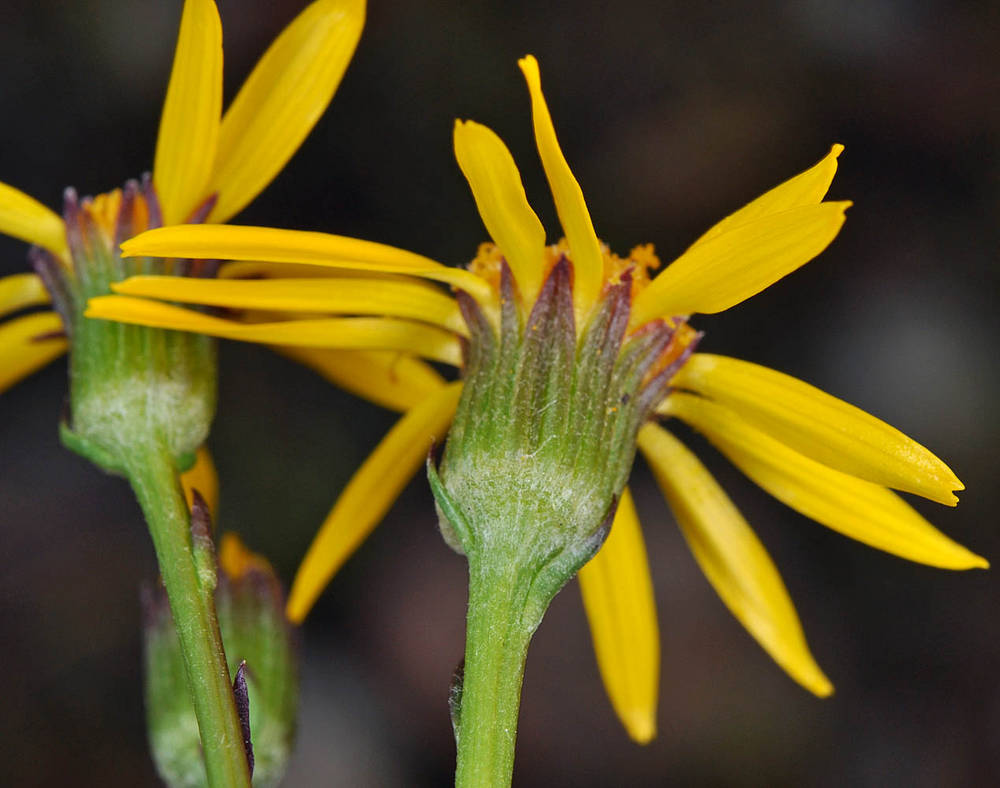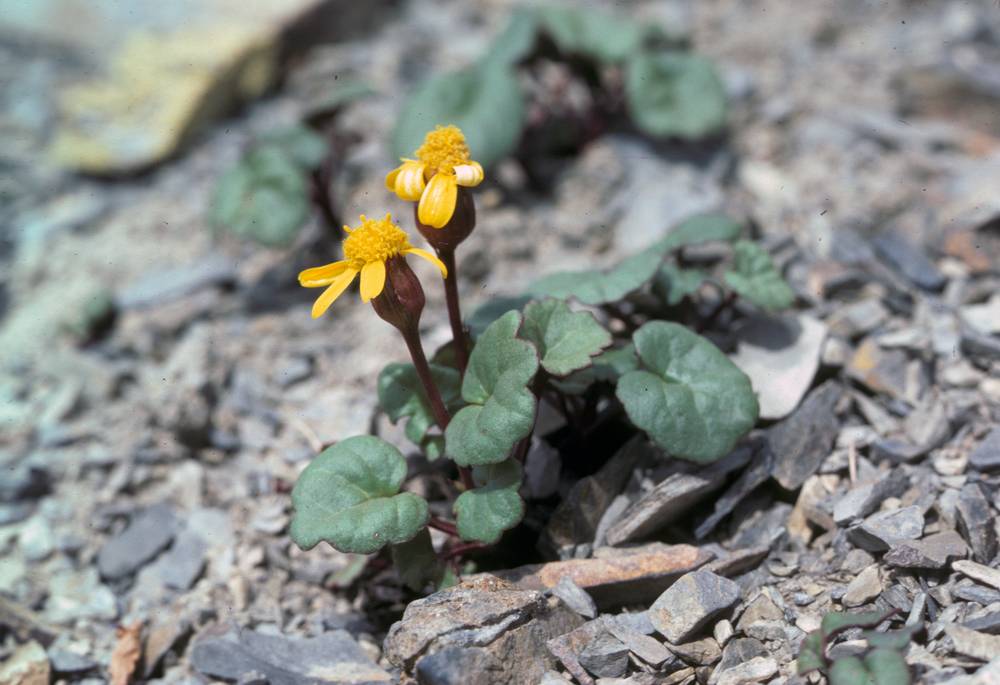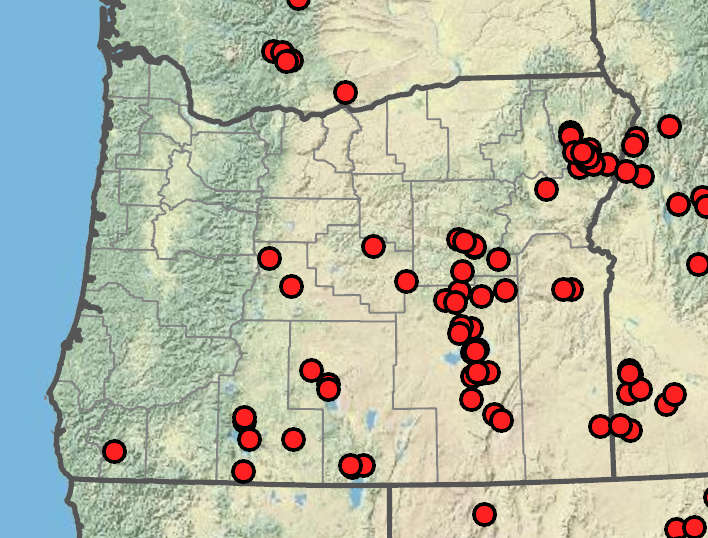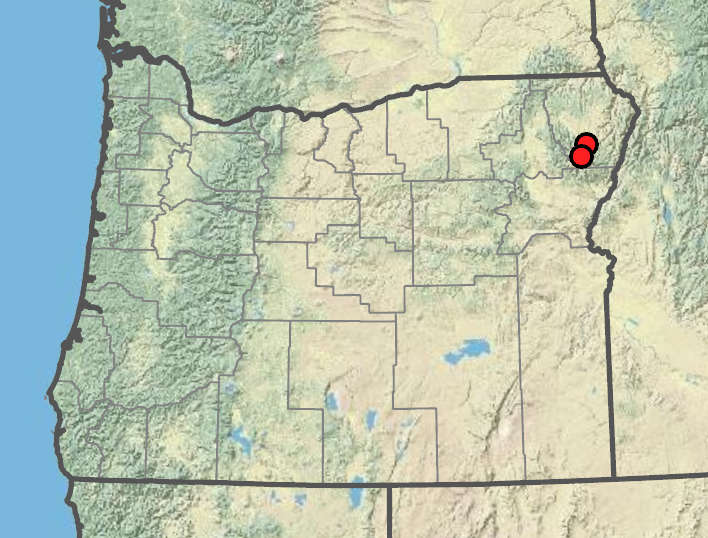Packera streptanthifolia
Packera porteri
cleftleaf groundsel, Rocky Mountain butterweed, Rocky Mountain groundsel
Porter's butterweed, Porter's groundsel
1 or 2–5, clustered, glabrous or sometimes sparsely pubescent near base and in leaf axils.
1, glabrous.
blades oblanceolate to orbiculate; thick; turgid, bases tapering to contracted;
margins dentate, dissected; entire, subentire or weakly lobulate;
surfaces usually glabrous, sometimes pubescent, petiolate.
blades reniform to subreniform, relatively turgid, bases abruptly contracted to cordate;
margins crenate, sometimes wavy, abaxially cyanic, petiolate.
similar to basal, gradually reduced, petiolate or sessile.
bract-like;
margins entire.
campanulate.
campanulate;
bractlets often cyanic.
8 or 13;
rays 5–10 mm.
8 or 13;
rays 8–10+ mm.
35–60;
corolla tubes 2–4 mm;
limbs 2.5–4 mm.
40–50+;
corolla tubes 2.5–3.5 mm;
limbs 2.5–3.5 mm.
(8)13 or 21, 4–7+ mm, green;
tips sometimes anthocyanic;
surfaces glabrous.
13 or 21, 8–10+ mm; deep red;
surfaces glabrous.
conspicuous.
conspicuous.
1–2.5 mm, glabrous;
pappi 3–6 mm.
1.5–2.5 mm, glabrous;
pappi 4–5.5 mm.
2–20+; in corymb- or subumbel-like arrays;
peduncles glabrous or sparsely tomentose, bracteate.
1;
peduncles glabrous;
bracts absent.
=46, 92.
Packera streptanthifolia
Packera porteri
Forests, open meadows, and valleys in dry to damp loamy soils. Flowering May–Aug. 400–2900 m. BR, BW, ECas, Lava, Owy, Sisk. ID, NV, WA; north to Yukon, northeast to Saskatchewan, east to WY, southeast to NM. Native.
Packera streptanthifolia includes weakly defined “phases” that have been treated as distinct species or as varieties. Characteristics used to define those taxa often overlap and are difficult to distinguish; some phases grade into each other.
Steep, alpine talus slopes. Flowering Jul–Aug. 2100–2500 m. BW. WA; CO. Native.
Only a single collection locality for Packera porteri is known from Oregon. In August of 1899, W.C. Cusick collected several duplicates of this species from “alpine ridges of the Wallowa Mountains, near the lake.” He noted at the time that “few plants were seen.” It has not been collected there since, although there is one additional observation from 1978. This species is more frequently collected (although still rare) on high peaks in the Rocky Mountains of central Colorado, nearly always being collected at over 3,600 m. Packera porteri is likely infrequently collected because it occurs only on steep talus slopes, using extensive fleshy rhizomes to find purchase in a precarious habitat. In this author’s opinion, it is one of the most interesting and elusive species in the genus and certainly worthy of concerted efforts to determine its current conservation status.
Debra Trock
Debra Trock





